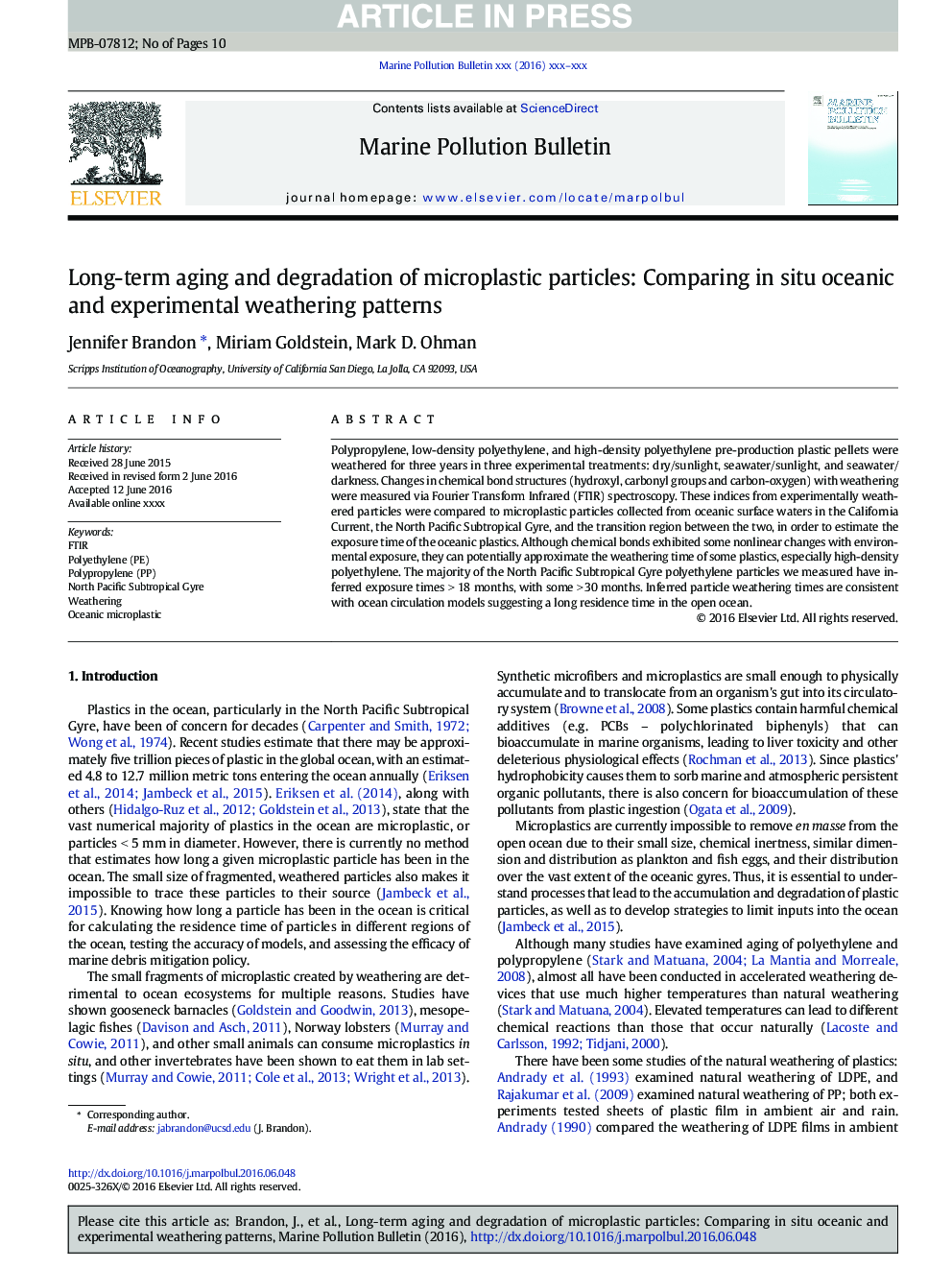| Article ID | Journal | Published Year | Pages | File Type |
|---|---|---|---|---|
| 6355677 | Marine Pollution Bulletin | 2016 | 10 Pages |
Abstract
Polypropylene, low-density polyethylene, and high-density polyethylene pre-production plastic pellets were weathered for three years in three experimental treatments: dry/sunlight, seawater/sunlight, and seawater/darkness. Changes in chemical bond structures (hydroxyl, carbonyl groups and carbon-oxygen) with weathering were measured via Fourier Transform Infrared (FTIR) spectroscopy. These indices from experimentally weathered particles were compared to microplastic particles collected from oceanic surface waters in the California Current, the North Pacific Subtropical Gyre, and the transition region between the two, in order to estimate the exposure time of the oceanic plastics. Although chemical bonds exhibited some nonlinear changes with environmental exposure, they can potentially approximate the weathering time of some plastics, especially high-density polyethylene. The majority of the North Pacific Subtropical Gyre polyethylene particles we measured have inferred exposure times > 18 months, with some > 30 months. Inferred particle weathering times are consistent with ocean circulation models suggesting a long residence time in the open ocean.
Related Topics
Physical Sciences and Engineering
Earth and Planetary Sciences
Oceanography
Authors
Jennifer Brandon, Miriam Goldstein, Mark D. Ohman,
